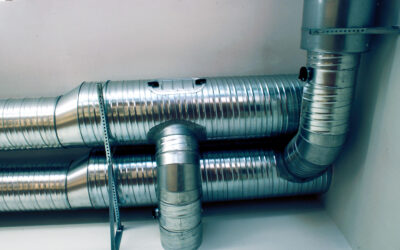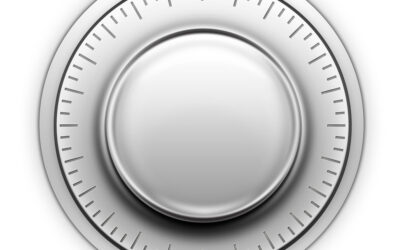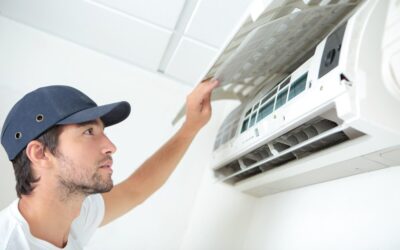Most people know someone who insists on cracking open the window of their car even as the air conditioner churns out cool air.
You can point out the cool air that is being wasted by going right out the window. You can say that the resulting “drag” on the car wastes gas. It probably won’t matter. If this person loves fresh air, that window is going to remain open.
You may know someone who understands the value of ventilation – or you may be like this yourself. Either way, let Charlie’s Tropic Heating & Air Conditioning extend the lesson to your home, especially now that cooler temperatures should be on our horizon in northeast Florida.
Add up the benefits of ventilation
Over the course of our long, hot summer your windows probably remained closed and the fresh air remained shut out. Your home had plenty of time to recirculate stale air and accumulate its share of contaminants and pollutants. Ventilating your home carries several benefits, including:
- Flushing out these harmful airborne elements, which many physicians believe can finally bring an end to long-lasting colds and viruses
- Reducing humidity
- Reducing moisture that could lead to mildew and mold growth
- Creating a wind-chill effect (at least with one ventilation method) if you wish to feel cooler
Count three ways to ventilate
Unlike the person who likes the twin feel of air-conditioned air and fresh outdoor air flowing through a car, home ventilation techniques generally are meant to be used to the exclusion of air conditioning. Still, common sense should dictate your actions. You’ll have a clearer understanding of why after Charlie’s explains the three primary ways you can ventilate your home, or through:
- National ventilation
- Mechanical (or spot) ventilation
- Whole-house ventilation
Breathe fresh air with natural ventilation
There is a little more to natural ventilation than simply opening your windows, though this is a fine place to start. Expect to engage in a little trial and error until you understand how air moves through your home – and how outdoor wind direction can affect the flow. Keep some general tips in mind:
- Ventilate your home when temperatures are cooler outdoors than they are indoors.
- Create an inlet and outlet for air on opposite sides of your home.
- To prevent air from simply moving between point A and point B. Try to force the air to take a longer path between these two points. You might end up leaving some windows closed to achieve optimal air flow.
- Create smaller window openings for inlets and larger window openings for outlets.
Call Charlie’s for a consultation if you get stuck. We’ll inspect the conditions on the interior and exterior of your home and make recommendations that will put the wind to your back.
Spin those blades with mechanical ventilation
Mechanical – or spot – ventilation refers to fans: tabletop fans, floor fans, ceiling fans and exhaust fans, all of which keep air moving and reduce moisture. It may be tempting to simply point a fan in the direction of where it’s needed but, some trial and error might be required here, too. Consider:
- Reversible fans can be used to good effect in window sills, especially in two-story homes. In this case, try placing a window fan in a lower-level window to pull cool air in your home and another fan in an upper-level window to blow warm air out of your home.
- Ceiling fans, which can be set to run in a counterclockwise direction in the summer to create a wind-chill effect and then reset to run in a clockwise direction in the winter to force warm air down from the ceiling. By cooling you in summer and warming you in winter, ceiling fans can allow you to adjust your thermostat so that you can save money on your energy bills at the same time you’re enjoying the benefits of ventilation.
- Exhaust fans, especially in the kitchen and bathroom. For maximum effect, the fans should run while these rooms are in use and for 15 minutes after they are heated up by cooking, showering or bathing.
Consider whole-house ventilation
Whole-house fans have been called life-savers by people in warm climates who do not enjoy the benefit of air conditioning. But these fans can do wonders in any home by pushing warm air outside through the attic and roof.
As you might expect, homes that are completely dependent on whole-house fans for cooling require a bigger fan than those homes that include air conditioning. Whole-house fans must be sized accurately and installed professionally.
Augment your ventilation efforts
As you experiment with natural, mechanical and whole-house ventilation techniques, other measures will enhance your success, including:
- Adequate attic insulation
- Awnings
- Carbon monoxide detectors
- Outdoor shading provided by trees and shrubs
- Preventing water from entering your home through windows, doors and the roof
- Reducing your dependence on lighting and gas-fired appliances
- Sun-blocking window treatments
- Sealing air leaks
- Calling Charlie’s when you need ventilation advice. We appreciate the value of proper ventilation. We want to show you how it can keep your home safe, healthy and energy-efficient.




0 Comments